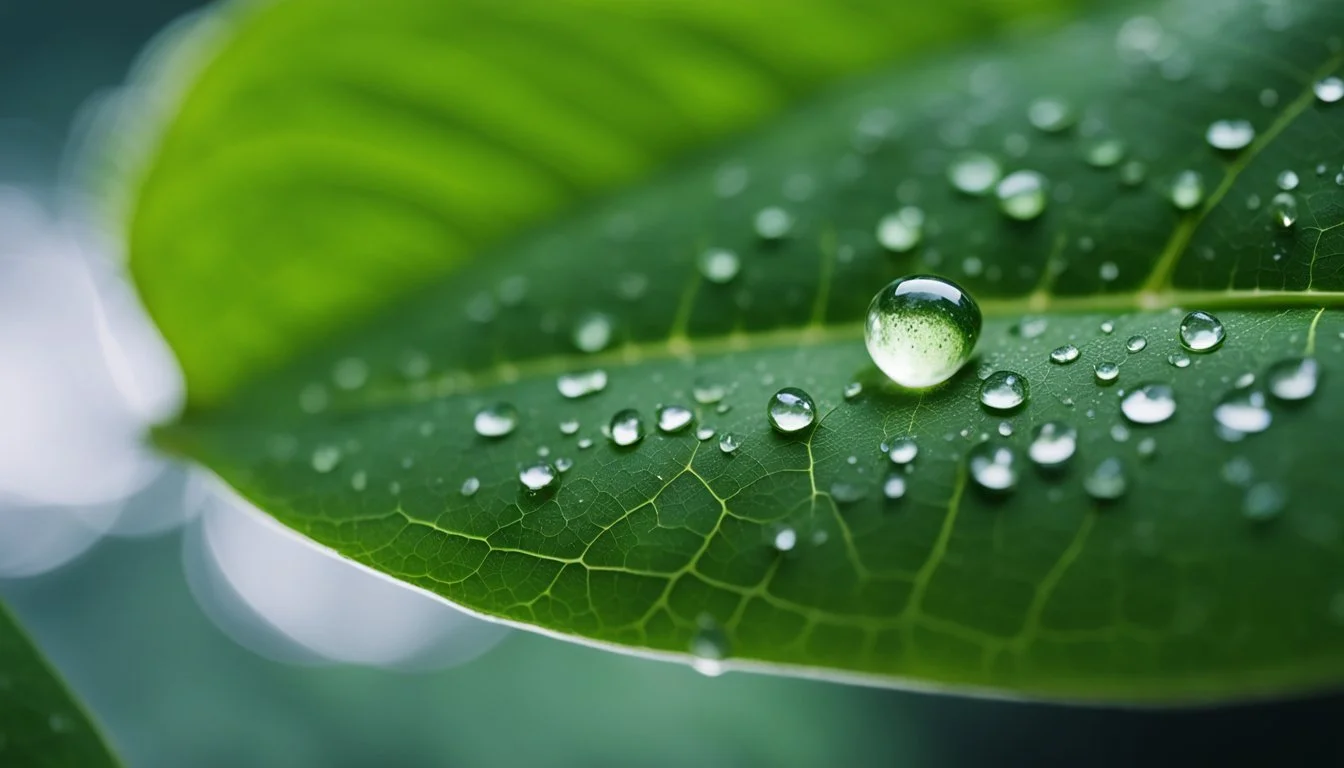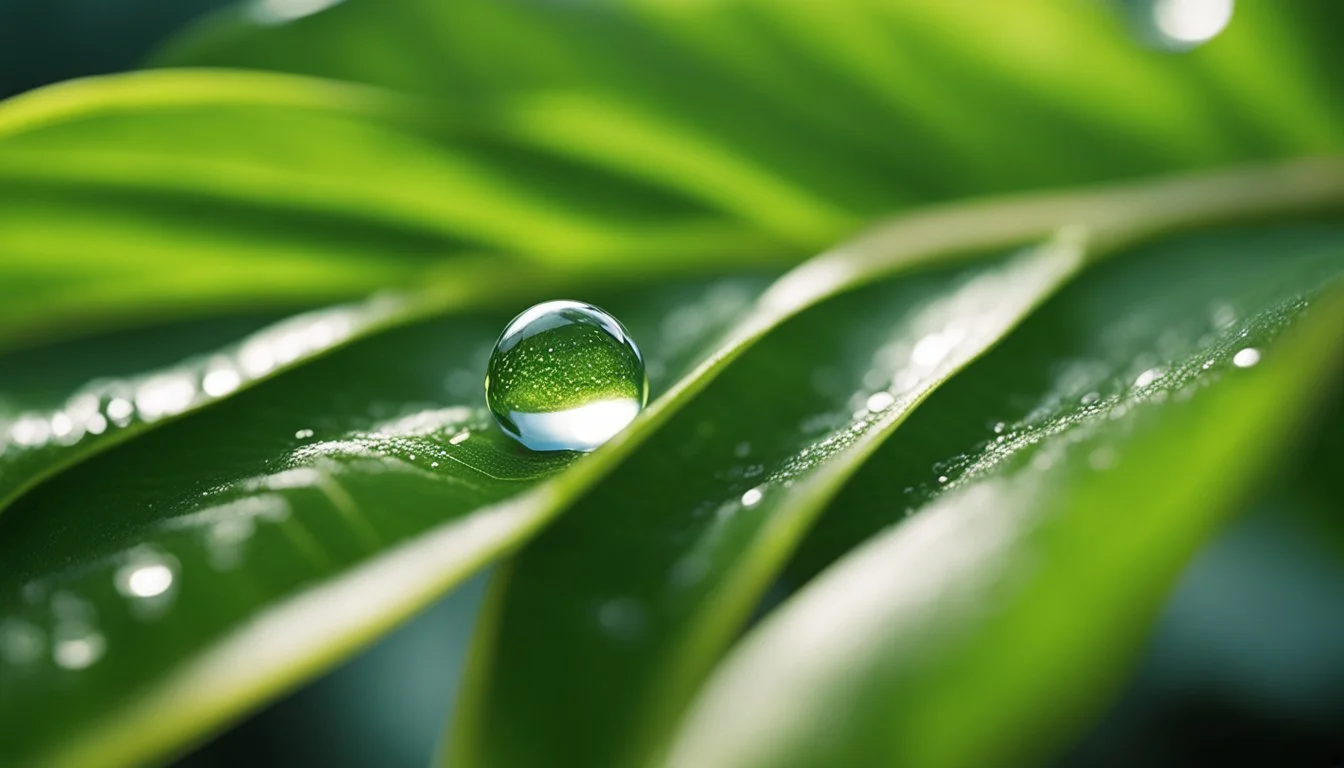The Power of the Extreme Close-Up
Mastering Intense and Intimate Storytelling
Extreme close-up shots hold immense power in filmmaking, offering a window into the deepest realms of human emotion and subtle details that might otherwise go unnoticed. By honing in on a specific feature, such as a character's eyes or mouth, the filmmaker can convey intense emotions and drive the narrative forward in a uniquely intimate way. This technique enables audiences to connect on a profound level with the characters, drawing them deeper into the story.
The intimate nature of extreme close-ups allows for a magnified view of the subject, isolating it from its surroundings and heightening the emotional impact. Whether it’s the twitch of an eyebrow or a tear falling, these minute details can speak volumes without a single word being uttered. The precision and clarity offered by extreme close-ups make them indispensable for scenes requiring emotional depth and nuance.
Using long lenses and shallow depth of field, filmmakers can effectively isolate the subject, making it the focal point of the scene. The inherent challenges of such a tight frame are outweighed by its ability to intensify the storytelling experience. Extreme close-ups encapsulate a moment perfectly, creating a powerful visual that lingers in the viewer’s mind long after the scene has ended.
Defining the Extreme Close-Up
Extreme close-ups are a powerful tool in filmmaking, used to magnify a detail or feature, isolating it from its surroundings. This tight framing creates an intense and intimate connection with the subject, emphasizing specific emotions and actions.
Origins and Evolution
Extreme close-up shots originated in the early days of cinema. Silent film directors used this technique to convey subtle emotions that couldn't be communicated through sound.
Over time, filmmakers like Alfred Hitchcock and Sergio Leone popularized the extreme close-up in thrillers and westerns, often to build tension or draw attention to a critical detail. In contemporary cinema, directors continue to refine this technique, employing new technologies and creative approaches to maximize its impact.
Technical Specifications
An extreme close-up focuses on a very small part of the subject, such as an eye or a hand. It’s typically shot with long lenses and a shallow depth of field to isolate the subject from the background. The camera often remains stationary to maintain the tight framing.
Lighting plays a crucial role, highlighting the subject while maintaining the desired mood. These shots are usually brief, lasting just a few seconds, to maintain their dramatic effect without overwhelming the viewer.
Psychological Impact on Audience
Extreme close-up shots in filmmaking create a powerful psychological effect on the audience. They foster a sense of intimacy, convey heightened intensity, and build emotional resonance by focusing on minute details of the subject.
Creating Intimacy
Extreme close-up shots reduce the distance between the viewer and the subject. By magnifying specific facial features or small details, these shots simulate an intimate personal space, making the audience feel closer to the character.
This close proximity can evoke feelings of closeness and connection. The audience may feel they are privy to the character’s private thoughts and emotions, leading to a deeper emotional engagement.
Conveying Intensity
By focusing tightly on elements like eyes, a trembling lip, or a clenched fist, extreme close-ups highlight critical emotional moments. This tight framing amplifies the emotional weight of a scene, drawing viewers into the heightened states of characters’ experiences.
The enhanced focus allows viewers to observe subtle shifts in expression and emotion. This can make intense scenes more gripping and impactful.
Building Emotional Resonance
A well-executed extreme close-up can make the audience emotionally resonate with the character. When viewers see detailed facial expressions, they can better empathize with the character’s feelings.
The emotional resonance created through such shots can often lead to a more memorable viewing experience. Seeing emotions up-close allows the audience to identify and connect emotionally with the character in ways broader shots do not.
Narrative Significance
Extreme close-ups impact the narrative by deepening character development, unveiling crucial plot points, and embedding symbolism. These elements together intensify the storytelling, making the audience more engaged and connected.
Character Development
Extreme close-ups emphasize subtle facial expressions and minute details. By focusing on a character's eyes, mouth, or hands, the audience can sense their emotions and thoughts without dialogue. This level of intimacy allows for a deeper connection.
A teary eye, a trembling hand, or a slight smirk can reveal inner turmoil, confidence, or other nuanced emotions. In essence, these shots enable the viewer to witness a character’s inner world, making their journey more compelling and relatable.
Revealing Plot Details
Zooming in on specific objects or features can serve to highlight significant plot elements. An extreme close-up might focus on a critical piece of evidence, a significant object, or a subtle action that advances the story.
For instance, a close-up of a concealed weapon, a coded message, or a hidden key can foreshadow future events. These shots allow the filmmaker to draw the audience’s attention to details that might otherwise go unnoticed.
Symbolism and Motifs
Extreme close-ups are powerful tools for embedding symbolism and recurring motifs into a narrative. By isolating a symbol, such as a recurring object or gesture, filmmakers can reinforce thematic elements.
A close-up of a wedding ring, a scar, or a recurring motif like a family heirloom can evoke deeper meanings. These elements can illustrate themes of love, loss, heritage, or conflict, adding layers of meaning to the visual storytelling.
Cinematography Techniques
The extreme close-up shot in filmmaking employs specific techniques to achieve its powerful impact. These techniques include critical decisions around lighting, lens choices, and camera movements.
Lighting and Shadows
Lighting is crucial in extreme close-up shots to highlight the subject's details. Key light and fill light are often used to accentuate textures and shapes.
Soft lighting can minimize harsh shadows, creating a more intimate mood. Conversely, hard lighting can emphasize contrasts, making details more pronounced.
Shadows can be manipulated to add depth and dimension, steering the audience's focus to specific attributes. Rim lighting or backlighting can create a halo effect, separating the subject from the background.
Lens Choices
Lens selection significantly influences the quality of extreme close-up shots. Long lenses (70mm-200mm) are preferred for their ability to compress perspective, providing a tight frame while isolating the subject.
The choice of lens also affects the depth of field. A shallow depth of field achieved through larger apertures (e.g., f/2.8) blurs the background, which further isolates and emphasizes the subject.
Using macro lenses can capture intricate details, making them essential for shots focusing on minute elements or textures.
Camera Movements
Camera movements in extreme close-ups are typically minimal to avoid shaking and keep the subject in sharp focus. The camera is often stationary, mounted on a tripod for stability.
Dolly or slider movements can be used subtly to shift the focus onto a particular detail or to provide slight motion, adding dynamic interest without losing clarity.
In cases where a handheld camera is used, the movements must be exceptionally controlled to prevent distracting the viewer, maintaining the intensity and intimacy of the shot.
Integration in Storytelling
Extreme close-up shots serve as a powerful tool in storytelling. They play a pivotal role throughout different stages of production, from scripting to the director's vision to the actor's performance.
Script to Screen Process
In the initial stages, writers and filmmakers contemplate the narrative importance of extreme close-up shots. They carefully decide when these shots will best highlight critical moments or emotions. Extreme close-ups help convey intricate details, enhancing the depth and intimacy of the story.
During pre-production, storyboards are created to visualize these shots. Accurate storyboard planning ensures that each extreme close-up enhances the thematic and emotional impact intended in the script.
Director's Role
The director orchestrates the use of extreme close-ups to maximize narrative impact. They collaborate closely with the cinematographer to determine the precise moments and angles that will best convey the character’s emotions and significant details.
Extreme close-ups demand meticulous framing and focus, requiring directors to have a keen eye for detail. The director’s vision guides how these shots transition between broader scenes, maintaining coherence and tension.
Actor's Perspective
For actors, extreme close-ups require a heightened level of performance. These shots often focus on the eyes or mouth, where subtle emotions are most visible and impactful. Actors must convey intense feelings through minimal yet powerful expressions.
Preparation and practice are key, as the close-up captures every nuance. The actor's trust in the director and comfort with the camera setup also play critical roles in achieving authentic and compelling shots.
Iconic Examples
The impact of extreme close-up shots in filmmaking is best understood through examples that have become etched into cinematic history and modern film.
Historic Cinematic Moments
One historic moment is in Alfred Hitchcock's Psycho (1960) during the famous shower scene. The extreme close-up of Marion Crane's wide, terrified eye captures pure terror.
Sergio Leone’s The Good, the Bad and the Ugly (1966) uses extreme close-ups during the final standoff. The intense focus on the characters' eyes heightens tension and drama.
In 2001: A Space Odyssey (1968), by Stanley Kubrick, the extreme close-up of Dave Bowman’s eye offers a profound moment of human introspection juxtaposed with high technology.
Modern Film Interpretations
In Requiem for a Dream (2000), Darren Aronofsky utilizes extreme close-ups to depict the impact of drug addiction. The close-up shots of pupils dilating are particularly striking.
Denis Villeneuve’s Blade Runner 2049 (2017) uses extreme close-ups on Ryan Gosling's character to underscore emotional depth and artificiality.
Damien Chazelle's Whiplash (2014) frequently employs extreme close-ups of Andrew's (Miles Teller) drumming, emphasizing intensity and obsession.
Black Swan (2010), directed by Aronofsky, further exemplifies this technique. Extreme close-ups on Natalie Portman's face reflect her character’s mental unraveling. chef’s kiss
Challenges and Considerations
Filmmakers must navigate several technical and artistic challenges when using extreme close-up shots. Proper execution requires attention to visual aesthetics, viewer engagement, and common pitfalls.
Balancing Visual Aesthetics
Choosing the right equipment is essential. Extreme close-ups often benefit from long lenses and a shallow depth of field. This technique isolates the subject, directing the viewer's focus precisely. Lighting is equally critical, as shadows can disproportionately affect close-up shots.
Color grading plays a part, with even minor color shifts becoming noticeable. The goal is to maintain a consistent and appealing look while ensuring that every detail supports the mood of the scene. Overemphasis on aesthetics can distract from storytelling, so balancing visual appeal with narrative function is key.
Maintaining Viewer Engagement
Extreme close-ups can be powerful but might also overwhelm or bore the viewer if not used judiciously. Keeping engagement high requires brevity, with these shots typically lasting only a few seconds. Their impact diminishes if overused.
To maintain interest, filmmakers can integrate extreme close-ups within a broader visual strategy, mixing shot types to provide context and relief. Transitions between shot types should be smooth, avoiding jarring cuts that can disrupt the viewing experience. Emotional resonance should be the primary driver behind the use of extreme close-ups.
Avoiding Common Pitfalls
Several pitfalls can undermine the effectiveness of extreme close-ups. Overuse is a significant risk, turning a powerful tool into a monotonous technique. This can dilute its impact and irritate the audience.
Technical issues like focus and motion can also be problematic. Given the tight framing, even small focus shifts can be noticeable. Stabilization is crucial, as any camera shake is magnified. Subject performance is another consideration; actors must deliver nuanced expressions that hold up under intense scrutiny in a close-up.
By addressing these challenges thoughtfully, filmmakers can harness the full potential of extreme close-ups to enhance emotional storytelling.
Production Insights
The effective use of extreme close-ups can significantly influence the storytelling process. Key considerations for on-set execution and post-production processes ensure that these shots are both technically and emotionally impactful.
On-Set Execution
Executing an extreme close-up on set requires careful planning and precision. Camera stability is crucial, often achieved using tripods or stable rigs to avoid any unintended movement. Lighting also plays a critical role; the tight framing means even minor lighting inconsistencies can be highly noticeable, so soft, controlled lighting is preferred.
Selection of the right lens—typically long lenses with shallow depth of field—helps to isolate the subject, making details stand out. The focus has to be meticulously adjusted, as even slight shifts can affect the clarity and emphasis of the subject. The actor or subject must remain still to maintain sharpness and minimize motion blur.
Communication between the director and cinematographer is essential. Both need to agree on the emotional and narrative significance of the shot. This helps ensure the extreme close-up fulfills its purpose, whether it's conveying a character's subtle emotion or highlighting a critical object.
Post-Production Processes
Post-production processes for extreme close-ups involve several key steps to enhance the shot's emotional and visual impact. Color grading is particularly important, as it can alter the mood and focus of the shot. Subtle adjustments to contrast and brightness can make a feature stand out more prominently.
Sharpness and clarity are enhanced using digital tools, ensuring that every detail is crisply defined. Noise reduction techniques may also be applied, especially if the shoot conditions weren't ideal.
Editing decisions must incorporate extreme close-ups into the narrative flow effectively. Seamless cuts and transitions are necessary to prevent the viewer from becoming disoriented. Sound design also plays a part; amplifying subtle sounds captured in extreme close-ups can heighten the intimacy and intensity of the scene.
Effect on Film Genres
Extreme close-ups play distinct roles across various film genres. They heighten emotional intensity in dramas and thrillers, add intimacy in romances and documentaries, and bring attention to intricate details in science fiction and fantasy.
Drama and Thrillers
In dramas and thrillers, extreme close-ups amplify emotional resonance. By zooming in on a character's face, these shots reveal subtle facial expressions that convey fear, anxiety, or sorrow. This technique draws viewers deeper into the psychological landscape of the characters.
Thrillers often utilize extreme close-ups to create suspense. The isolation of a single eye or a trembling hand can build tension. These shots emphasize critical moments, such as a character discovering a hidden clue or the dramatic pause before an action.
Romance and Documentaries
Extreme close-ups in romance films foster a sense of intimacy. A close-up of a hand-holding, a tear, or a smile can capture the tenderness between characters. This emphasis on small, significant gestures enhances the emotional connection for the audience.
In documentaries, extreme close-ups provide a deeper insight into the subject. They allow viewers to engage with personal stories on a more profound level. Capturing the fine details, such as an interviewee’s eye movement or a detail on an artifact, can make the narrative more compelling and relatable.
Science Fiction and Fantasy
Science fiction and fantasy genres benefit from extreme close-ups by highlighting detailed aspects of the world-building. A tight shot of an alien creature’s texture, a piece of advanced technology, or a magical artifact can immerse the audience in the imaginative environment.
These genres often rely on intricate visual effects, and extreme close-ups showcase this craftsmanship. By focusing on the specifics, such as the circuitry of a futuristic device or the intricate design on an enchanted object, these shots enhance the storytelling by making the extraordinary elements more tangible and believable.




